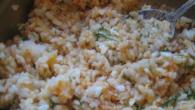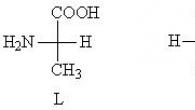Ascites – dangerous disease, at which according to various reasons excess fluid accumulates in different organs human body. Most often, this disease affects the liver, kidneys, and heart; it develops against the background of other pathologies of these organs. Ascites is common in liver cirrhosis, a condition in which organ tissue dies and is replaced by nonfunctional scars.
With ascites against the background of cirrhosis, fluid accumulates in the abdominal cavity, this is one of the complications that can significantly worsen the course of the disease and prognosis. Stagnation of fluid in in this case occurs due to increased pressure in the venous system.
Ascites in liver cirrhosis: what is it?
Ascites is a common complication, affecting up to half of all people diagnosed with liver cirrhosis. The destructive liver disease itself is one of the main causes of mortality due to pathologies of the gastrointestinal tract; the appearance of ascites further reduces the chances of survival.
Often, the appearance of abdominal ascites in liver cirrhosis depends on how quickly the destructive liver disease was identified and the patient’s efforts to combat it. If cirrhosis is detected on initial stage, the right one was immediately selected correct treatment, the likelihood of developing complications is reduced.

The changes that occur in the body during cirrhosis of the liver lead to the accumulation of excess fluid in the abdominal cavity. First of all, normal functional liver tissue is replaced by fibrous tissue, because of this, blood circulation is disrupted, the vein is compressed, and the oncotic pressure of the plasma decreases.
Blood volume decreases, the body reacts by producing special substances that provoke fluid retention. In addition, against the background of cirrhosis due to pathological processes Heart failure may occur, which also affects the development of ascites.
Ascites itself rarely causes death; it all depends on how the disease progresses, cirrhosis of the liver, whether other complications are present, and how successful the treatment is. To estimate life expectancy with these pathologies, the following factors should be taken into account:
- If cirrhosis of the liver does not enter the stage of decompensation, in which the organ can no longer cope with negative processes on its own, the functions of the liver are not lost; in this case, you can live peacefully with ascites for more than ten years.
- With cirrhosis at the stage of decompensation with ascites, the likelihood of living longer than five years is extremely low.
- Within six months after the development of ascites, there is a chance of death if the disease turns out to be resistant to therapy and often recurs.

On this moment If you consult a doctor in a timely manner, the probability of living more than ten years is quite high. In general, ascites against the background of cirrhosis - dangerous pathology, which requires prompt intervention.
Important! Ascites is considered an unfavorable complication.
Symptoms
Ascites has a number of signs that can be used to determine the occurrence of dangerous process. At first, the volumes of fluid are small, however, as the disease progresses, the symptoms will become more noticeable.
- Increase in abdominal volume. In a short period of time, it can increase significantly; the skin, when fluid accumulates, is smooth, and pinkish vessels can be visible. When lying down, the abdomen will protrude; if you lightly press or hit the abdomen, a symptom of hesitation will occur.
- There is discomfort and a feeling of squeezing in the abdominal area. The patient begins to gain weight.
- As a result of the pressure of fluid volumes on the diaphragm, lung symptoms may occur. When changing physical position, a cough, a feeling of pressure, shortness of breath, and a feeling of lack of oxygen occur. For the same reason, blue lips may appear.
- Due to the pressure of fluid on the stomach and other organs of the gastrointestinal tract, various disorders occur from digestive system. There is a feeling of heaviness, a feeling of satiety with small amounts of food, vomiting, belching, and heartburn may occur. When pressure is placed on the intestines, it occurs intestinal obstruction, constipation.
- With pressure on bladder may arise various problems with urination. Too much frequent urination, pyelonephritis, cystitis.
- The occurrence of swelling in the legs.
- The appearance of a protruding navel, umbilical hernia.

The first signs of the disease will begin to appear when the amount of fluid in the abdominal cavity exceeds one liter, maximum amount the liquid that can form is about twenty-five liters.
The temperature with ascites usually does not rise, this symptom indicates cirrhosis. Also, an increase in body temperature is possible if a complication of ascites and cirrhosis occurs in the form bacterial infection or when inflammation occurs.
Important! Before the onset of symptoms of ascites, the symptoms of liver cirrhosis always intensify.
Is it possible to cure ascites? This disease is a complication of cirrhosis; with the treatment of this pathology, the accumulation of fluid itself will begin to disappear. However, it is worth considering that treatment of liver disease can take quite a long time; therapy requires the patient to take his condition seriously and strictly follow the doctor’s instructions. Self-medication in this case is unacceptable.

How to treat?
The main treatment is always aimed at combating degenerative liver disease; if fluid accumulates, it is used additional therapy. Without treating cirrhosis, any measures to treat ascites will be useless. Therapy usually consists of taking a number of drugs, specialized diet, sometimes surgery is required.
Typically, depending on the causes of liver cirrhosis, the following drugs are selected:
- Hepatoprotectors based various substances. They protect the liver and stop destructive processes it lowers cholesterol levels. They are necessary regardless of the cause of the disease.
- Antiviral agents. They are required if liver disease was caused by viral infection, hepatitis groups B or C. They suppress the activity of the virus and displace it from the cells of the organ.
- If the disease was caused by autoimmune processes, anti-inflammatory drugs are required. Prednisolone is commonly used.
- Albumen. This drug helps restore the lack of proteins in the blood.
- Various diuretics are usually used to prevent ascites when starting treatment for liver disease or when it occurs. Examples of diuretics: Aldactone, Spirix and others.

In case of cirrhosis in the stage of decompensation, surgical intervention is often required, an organ transplant is needed. This operation is quite complicated, often the patient does not have time to wait for a donor.
If the amount of fluid in the abdominal cavity does not decrease due to medication, a technique called laparocentesis is used. Using a special needle, excess fluid is removed; its removal leads to improved well-being. You cannot remove more than five liters at a time; several procedures may be required.
Important! In case of this disease, you should follow bed rest.
Nutrition for liver cirrhosis with ascites
The diet for ascites and cirrhosis of the liver should be strict. First of all, limit the consumption of liquid, salt, and any foods that can cause fluid retention in the body.
It is also important to avoid alcohol in any doses, sweets, fatty foods And choleretic products. You should include more vegetables and fruits, low-fat types in your diet fermented milk products. It is recommended to take the most simple recipes dishes from diet No. 5, which is best suited for people with diseases of the liver, gall bladder, and pancreas.

Is it possible to have lemon and others? sour foods with this disease? No, they should be completely excluded. Food that irritates gastrointestinal tract, can worsen the course of the disease and provoke the development of complications.
In general, usually with ascites against the background of liver cirrhosis, the prognosis is unfavorable, but with strict control and properly selected treatment, the chances of recovery and living a long time increase. The main thing is not to self-medicate, in this case it is extremely dangerous.
The disease itself, cirrhosis of the liver, is very dangerous disease, and if such a disease is accompanied by a complication, it can lead to a poor result.
- This serious disease liver disease, which is accompanied by the destruction of liver tissue, the liver itself can decrease or increase and become dense.
Cirrhosis of the liver, complicated by dropsy, is a common reaction of the body during cirrhosis.
Ascites is called dropsy - this is an accumulation of fluid in the abdominal cavity, this is considered a secondary disease, since it is a consequence. The fluid that collects in the abdominal cavity can in some cases reach 25 liters. Dropsy can occur in 75% of liver cirrhosis. The patient has an enlarged abdomen and is actively gaining weight.
Symptoms and manifestations of ascites.
Fluid in dropsy accumulates gradually, but there are cases when rapid development of thrombosis occurs portal vein, which leads to the formation of transudate. You may not immediately notice dropsy, since it is invisible until it reaches one liter. At the same time, the sick patient feels in his abdominal cavity, distension, unbearable heaviness, bloating, and abdominal pain. A doctor who is examining a patient's abdomen by tapping the abdominal cavity hears a dull sound in the lower abdomen.
Externally, the stomach becomes huge and immense, due to the large amount of fluid that has collected in the abdominal cavity. The very shape of the belly resembles an apron, if a person is standing, and if he lies on his back, then the belly spreads out to the sides, reminiscent of the belly of a frog. The navel protrudes out very strongly, the wall is in constant voltage, the skin on the abdomen itself becomes thin and seemingly transparent. With this disease, the skin is greatly stretched, and white or bluish-purple stretch marks form on it.
And when a person gets rid of fluid in the stomach, and at the same time begins to actively lose weight, the skin acquires a pale yellow color. On the skin of the abdomen, the venous network becomes clearly visible, which is somewhat similar to the head of a jellyfish. When such an amount of water accumulates, the patient’s blood pressure increases, hemorrhoids appear, an umbilical or femoral hernia forms in the abdominal cavity, or even rectal prolapse. All these consequences can occur due to the fact that the cause of dropsy is cirrhosis of the liver.
For effective treatment alcoholism experts advise AlcoLock product. This drug:
Patients who suffer from dropsy are candidates for liver transplantation. In this case, the sick patient must be placed on salt-free diet. This disease, dropsy with cirrhosis of the liver, can progress very quickly, in this case you need to act quickly, since if you leave everything to chance, the result can be fatal.
According to statistics, patients who suffer from dropsy with cirrhosis of the liver can live up to 3 years, but mostly live up to a year. But all this depends on the body, the stage of the disease and many other factors. At the same time, the whole body begins to hurt and torment the patient, as it happens chain reaction. One disease catches on, another and so on occurs until the body becomes exhausted.
Ascites, which occurs with cirrhosis of the liver, is the accumulation of fluid in the abdominal cavity and, as a result, stagnation of blood, as well as increased pressure in the veins and an increase in abdominal volume. At the same time, ascites is not an independent pathology, but acts as a complication of cirrhosis, aggravating the course of the disease and significantly worsening the prognosis for recovery.
Ascites in liver cirrhosis is not such a rare occurrence. According to statistics, ascites occurs in 50% of patients over 10 years after confirmation of the diagnosis of liver cirrhosis.
Life expectancy in patients with dropsy with cirrhosis of the liver
You need to understand that ascites itself extremely rarely causes the death of a patient. Therefore, survival forecasts depend to a greater extent on the course of the main process.
So, there is the following data:

You should also consider:
- what lifestyle does the patient lead;
- how adequate is the prescribed therapy;
- timely puncture of the abdominal wall;
- correct use of diuretics, and so on.
Sometimes fulfilling these conditions helps patients live for more than 10 years. But more often, ascites is considered an unfavorable prognostic sign, as a result of which half of the patients die within 2 years.
Causes of ascites in liver cirrhosis
The main cause of ascites is cirrhosis. Why does this complication develop?
And this happens due to the following processes:

Clinical manifestations of ascites
In cases where a small amount of fluid accumulates in the abdomen, patients almost never complain.
But with further development of the disease, following signs ascites:

First clinical manifestations are detected when the volume of liquid reaches 1 liter, and the maximum amount of accumulated liquid can be 25 liters. However, before the first signs of ascites appear, patients are concerned about the symptoms of the underlying pathology (i.e. cirrhosis): painful sensations in the area of the right hypochondrium, fatigue, weakness.
How to cure ascites in liver cirrhosis
After the diagnosis of “ascites” is confirmed, doctors begin its treatment, however, given that this nosology is a complication of cirrhosis, treatment is aimed primarily at eliminating the underlying pathology.
Drug therapy includes the following medications:

 In addition, the patient must follow a diet (table No. 5). In this case, the amount of liquid consumed should be reduced to 1.5 liters per day. You should also observe bed rest, because in a horizontal position, blood filtration increases due to increased kidney function.
In addition, the patient must follow a diet (table No. 5). In this case, the amount of liquid consumed should be reduced to 1.5 liters per day. You should also observe bed rest, because in a horizontal position, blood filtration increases due to increased kidney function.
In cases where conservative treatment doesn't bring desired effect, patients are shown to have surgical intervention- laparocentesis, which involves removing excess fluid from the abdominal cavity using a special needle. As a rule, no more than 5 liters of liquid are removed in one procedure, since there is a likely risk of collapse. Laparocentesis significantly reduces painful sensations and improves the general well-being of the patient, but during its implementation there is high probability complications.
Diet for ascites
 Successful treatment of ascites in liver cirrhosis is impossible without following a diet.
Successful treatment of ascites in liver cirrhosis is impossible without following a diet.
Changes in liver tissue are characterized by massive proliferation and subsequent replacement of normal tissues with connective tissue formations. Deformation and wrinkling of an organ entails a violation of its functions. The survival rate of patients in this case depends on the amount of connective tissue (scars), as well as the manifestations liver failure.
With this pathology, the liver is unable to fully neutralize allergens and neutralize toxins, as well as maintain normal exchange substances and provide the body sufficient quantity energy (that is, maintain an optimal balance of microelements and vitamins).
With ascites, the liver is unable to support normal level phospholipids, hormones, bile, which entails many disorders in the body. Therefore, in order to adequately cure patients, correction of disturbed processes is necessary.
Diet specifics
As mentioned above, the success of treating ascites largely depends on adherence to a special diet (diet No. 5):

With this pathology, the patient is prescribed vegetarian soups with vegetables, cereals, pasta, lean fish, dried bread, semi-viscous porridges made from oatmeal, semolina, buckwheat, rice groats, beef, rabbit meat, cookies, chicken.
Dairy products are also allowed, but they must be low-fat. Reception should be limited whole milk. Amount consumed butter should not exceed 30 grams per day, and vegetable - no more than 15 grams.
Cauliflower, zucchini, pumpkin, potatoes, and beets can only be consumed boiled or stewed. The only fruits allowed are:
- baked apples;
- compotes (fruit and berries);
- mousses;
- bananas (fresh);
- jelly.
What foods should be excluded from the diet?
So, for this pathology the following are prohibited:

Sample menu for patients suffering from liver cirrhosis with ascites
Breakfast: omelette steamed with beef or lean fish, tea, biscuits or oatmeal, tea, cottage cheese, crackers.
Dinner: potato soup, pasta, cutlet and plum-apple compote or vegetarian soup, rice, chicken.
Afternoon snack: fresh banana, cottage cheese, baked apple.
Dinner: salad, boiled fish, kefir.
It should be remembered that therapeutic diet in this case, it provides for boiled or baked dishes, and therefore it is better for patients with a similar pathology to get a double boiler.
Attention, TODAY only!
One or more negative factors, for example, hepatitis, alcohol consumption, some medicines, toxic substances, have a destructive effect on the liver. Ascites in cirrhosis is a negative complication that gradually manifests itself, indicates advanced disease, and has an unfavorable prognosis.
Why does fluid accumulate in the abdominal cavity?
Due to the process of death of liver cells, proliferation of connective tissue, destruction occurs blood vessels organ. A diseased liver is not able to cleanse the required amount of blood. Because of this, portal pressure venous system gradually increases, the body becomes contaminated with toxic metabolic products. Due to a decrease in hepatic blood flow, plasma leaks from the blood through the walls of blood vessels, which accumulates in the abdominal cavity. This becomes the beginning of the development of ascites.
Signs of ascites
It is possible to accurately determine that a patient is developing ascites with cirrhosis of the liver only when 1 liter of fluid accumulates. It is sterile and does not contain pathogenic microorganisms, has 2.5% protein, transparent color with a yellowish tint. The abdomen gradually increases, sags, and becomes tense. Tapping with your fingers produces a dull sound. Fluctuation is also detected: with jerky palpation, a wave-like movement of the liquid inside occurs.
Another common symptom is bleeding of the esophageal veins. Superficial venous collaterals may also be observed with an increase in abdominal volume. The patient may complain of memory impairment, heaviness in the stomach, weight gain, swelling of the legs and arms. With severe ascites, the course of the disease is characterized by:
- dilated veins;
- development of a hernia;
- severe bloating belly;
- bulging navel.
How is abdominal ascites classified?
The disease is classified according to stage of development and type. These factors determine how the patient will be treated and how long he has to live. Based on the amount of accumulated fluid, 3 stages are distinguished:
- Less than 3 liters. External symptoms not too noticeable, this stage is determined at ultrasound examination or using laparocentesis (diagnostic puncture). Once the stage is identified, the prognosis for recovery is high.
- More than 3 liters. The shape of the abdomen changes, but abdominal wall still not stretched, the movement of the diaphragm remains the same. Signs are observed renal failure, symptoms of higher brain activity, which is called hepatic encephalopathy.
- From 10 to 20 l. An enlarged abdomen disturbs the patient, difficulty breathing occurs, and cardiac dysfunction occurs. Man feels constant fatigue, the body swells.
Ascites is divided separately into refractory and non-refractory. The latter case cannot be treated, while the former responds to therapy. There are 3 groups of ascites in liver cirrhosis. Separation occurs according to the nature of the behavior of the liquid:
- Tense. Therapeutic therapy does not help, the amount of fluid increases.
- Stationary. It is possible to get rid of the fluid if treated with a conservative method.
- Transitional. It is easy to treat using effective methods.

How is fluid accumulation in the abdominal cavity treated?
The main direction of therapy for this disease is removing fluid from the abdominal cavity and preventing the development of cirrhosis. To date, there is no proven effective treatment for the disease. All the remedies prescribed by the doctor either affect only the symptoms of the disease or get rid of the root cause of the disease: alcohol or other intoxication, a virus, autoimmune processes. This helps improve the prognosis and slow down the course of the disease. A common solution becomes a liver transplant, which obliges you to adhere to immunosuppressive therapy for the rest of your life.
Drug treatment of liver cirrhosis with ascites
As a rule, the patient is prescribed diuretics (Ethacrynic acid, Furosemide, Spironolactone) when it is necessary to treat ascites in liver cirrhosis. A person must control the amount of water he drinks, but the real effectiveness of diuretics is insignificant. An important factor in the course of treatment of liver failure, which often accompanies ascites, is regular stool(at least 2 times a day), prevention of constipation. For this, a laxative is prescribed, for example, Duphalac.

Diet for liver cirrhosis with ascites
An important aspect treatment is a diet for ascites. Nutrition refers to conservative method therapy and can stop further development of the disease. There are two types of cirrhosis: compensated and decompensated. There are for them different recommendations. Nutrition for liver cirrhosis with ascites is prescribed differently, depending on the type of disease detected.
Compensated
The liver in the compensated type is able to utilize ammonia during the synthesis of urea. The patient must include in the menu more products with protein content. You should receive at least 140 g per day. A large number of amino acids, substances that prevent the synthesis of TAG and help synthesize phospholipids, will alleviate the condition. The protein needed to replenish the menu is found:
- in fermented milk and dairy products;
- fish;
- egg white;
- buckwheat;
- lean beef.

Decompensated
In this case, there are many amino acids in the blood, and aminoaciduria is characteristic (excretion of useful protein compounds in the urine). The person's condition may be close to comatose. The diet menu should not be rich in protein, no more than 30 g per day. This important factor, because when the condition develops hepatic coma protein will cause additional harm to the body. The most acceptable are considered dietary tables at numbers 5 and 10.
Abdominal puncture
When conservative therapy, proper nutrition do not give the desired effect, the patient can have some of the fluid removed using a puncture. The procedure goes as follows:
- The patient’s abdominal cavity is pierced between the pubis and navel with a thick needle;
- suck out the accumulated liquid;
- to stop the progression of ascites, a diet and diuretics are prescribed;
- prescribed to restore protein levels intravenous administration albumin.
Video: fluid in the abdominal cavity with ultrasound
A disease such as dropsy occurs as a result of a malfunction internal organs, for example, due to heart failure, as well as cirrhosis of the liver. The last case is the most dangerous for human health. However, first things first.
What it is?
Dropsy – popular name diseases. In medicine they use another term – ascites. Ascites can occur not only with cirrhosis, but also with dysfunction of other internal organs. This disease usually involves slight swelling of certain parts of the body, for example, the hands, lower parts legs, etc. The disease manifests itself on a huge scale during liver dysfunction. Moreover, it is not the limbs that swell, but the abdominal cavity, the volume of which is large enough to accommodate up to 25 liters of liquid. Sadly, according to statistics, 50% of people with ascites are able to live only up to three years from the moment of diagnosis. Why 50 percent? Because a lot in such a situation depends on individual qualities organism, treatment method, as well as mental state sick. After all, if a person believes in get well soon, he is able to overcome almost any disease.
As is known, in cirrhosis, liver cells that help cleanse the blood and enrich it nutrients, in particular, glucose, are replaced by useless connective tissue. All this affects the composition of the red liquid. As a result, some of its components are no longer retained by other fractions and leave the blood, gradually seeping through the smallest pores in the vessels and entering the abdominal cavity.
To the common man, of course, such an explanation may seem somewhat absurd, or even fantastic, but nevertheless, it is true.
The following factors can increase the activity of ascites:
- Increased blood pressure portal vein, as it increases the rate of leakage of free fluid through the vessels;
- Insufficient synthesis of the protein albumin, which serves as a binder and plays an important role in retaining free fluid in the blood;
- Incorrect operation of the lymph removal system.
All this contributes to the manifestation of the main symptom – the accumulation of water in the abdominal cavity. Moreover, everything happens not at lightning speed, but slowly, milliliter by milliliter.
 Unlike liver cirrhosis, this disease makes itself felt almost immediately. It is simply impossible not to detect dropsy. Of course, something can be implied until the volume of free fluid reaches one liter, since heaviness and bloating are felt.
Unlike liver cirrhosis, this disease makes itself felt almost immediately. It is simply impossible not to detect dropsy. Of course, something can be implied until the volume of free fluid reaches one liter, since heaviness and bloating are felt.
But after three or more liters have accumulated, all doubts about the presence of the disease should disappear, because they face obvious signs ascites, such as:
- Visual increase in abdominal size;
- Rapid weight gain of the patient;
- Unbearable sensations of heaviness, distension.
At an advanced stage, when the amount of water is more than 20 liters, the patient’s stomach becomes like a large saggy bag. The skin in the navel area stretches and thins. The navel itself sticks out. With a weak blow to the stomach, a dull sound is heard. If you hit not from the front, but from the side, a clearly visible response wave will appear. When the patient moves from a standing position to a lying position, his stomach spreads out in different directions, like a frog's belly. After the fluid is released, the skin ceases to be taut and takes on a yellowish tint. Plus, the network of venous plexuses becomes more visible on it.
As with cirrhosis of the liver, with ascites there is a risk of negative consequences in the form of new diseases caused by the original disease. Add to list possible complications includes:

Peritonitis is the most common complication of dropsy. It is an inflammation of the contents of the abdominal cavity due to infection. Peritonitis – enough dangerous phenomenon, which can lead to death of the patient if no health measures are taken. Retention of aqueous substance in the pleural cavity is possible, but not so much common complication with abnormal liver function. The symptoms of this phenomenon are: shortness of breath, dry cough. As in the case of ascites, the contents pleural cavity When infected, it can become inflamed. Then pleurisy occurs. Symptoms of pleurisy are: elevated temperature, weakness, pain in the chest area.
 To stop the accumulation liquid substance and remove the already accumulated mass, you first need to get rid of the causative disease, namely cirrhosis of the liver.
To stop the accumulation liquid substance and remove the already accumulated mass, you first need to get rid of the causative disease, namely cirrhosis of the liver.
If before last stage The matter has not yet reached its conclusion; as a treatment, the patient is prescribed a diet, the conditions of which prohibit:
- Consume salt and any salt-containing products;
- Drink alcoholic beverages;
- Eat foods that require increased liver activity.
At the same time, the patient is allowed to eat:
- Fruits vegetables;
- Low-fat foods;
- Easily digestible food;
- Fish, meat with low fat content.
 Following a diet will relieve the liver from permanent job in overload mode, thereby balancing the blood composition. This will help reduce the leakage of blood vessels and ensure the outflow of free fluid.
Following a diet will relieve the liver from permanent job in overload mode, thereby balancing the blood composition. This will help reduce the leakage of blood vessels and ensure the outflow of free fluid.
Provided that liquidate main symptom cirrhosis fails; treatment with medications and folk remedies takes place. Usually the patient is prescribed diuretics. The rate of fluid outflow depends on its quantity: 1 kg per day for 20 or more liters, and 0.5 kg for a volume of 10 to 20 liters. From folk remedies decoctions and infusions of various herbs are often used.
Puncture is the only way to remove excess moisture from the body if ascites has long passed into a severe stage and nothing else helps. It is worth noting that puncture, which involves draining a fluid substance by inserting a thick needle, is an unsafe procedure, since bacteria that enter the body along with the needle can cause peritonitis. And yet, in severe cases this is the only, and, moreover, real, chance to survive. Therefore, at the first signs of dropsy, you should first consult a doctor, and not self-medicate, because following the advice of non-professionals, there is a high chance of only harming yourself.






